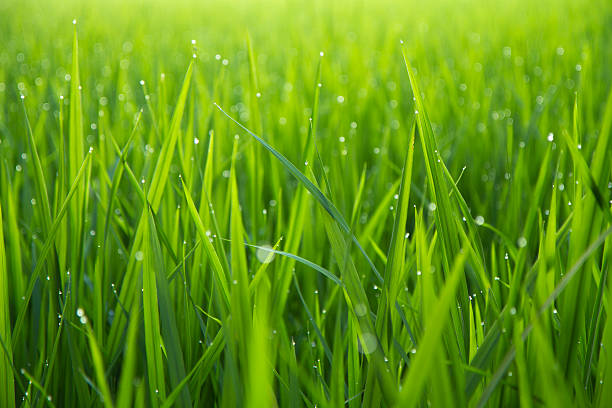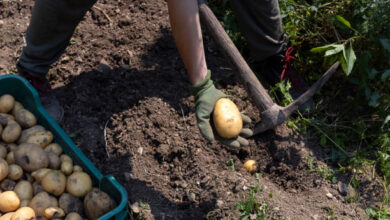HOW TO GROW GRASS FAST?

HOW TO GROW GRASS FAST?
All nature lovers dream of having a flowery garden with a beautiful green lawn to enjoy the hot days. The good news is that getting a healthy lawn is not a very complex gardening job, it just takes willpower, a little patience and good planning. Planning to sow a new lawn? You’ve come to the right place. Below, we’ll explain how to grow grass fast and share some useful tips to make it easier to maintain.
Read Also: When to water plants
STEPS TO GROW YOUR LAWN FASTER
- CHOICE OF LAWN AND SEASON
Start by choosing the type of grass that best suits your area’s climate. Grass is divided into two categories:
- Cool season grass is tolerant of near freezing temperatures as well as drought.
- Warm season grass is resistant to very high temperatures such as those in tropical regions.
Once you have chosen the type of grass, you also need to decide on the best time to sow your lawn. No matter where you live, there are a few basic rules to follow in order to determine when to sow your lawn:
- It is recommended to sow once there is no risk of frost at night. The soil temperature should be at least 8 degrees.
- Grass seed prefers cool temperatures as it accelerates its growth by ensuring a daily supply of water (so it is best not to sow your lawn in mid-summer!)
- It is best to sow after your spring raking.
In general, the ideal times to sow your lawn are spring (mid-May to mid-June) and late summer (mid-August to mid-September). In Quebec, these times may vary depending on the region where you live. You can consult our guide to determine the best time to sow your lawn depending on your region.
Read Also: What to Plant in July
- SOIL PREPARATION
This step is probably the most important to ensure healthy growth, but it is also the most complex. Soil preparation is divided into two parts:
- Level the ground
If you choose to use sod, it is recommended that you level your lawn with a rake before laying the sod. Be sure to remove any rooted plants and broadleaf plants. Then, level the soil with a shovel or garden hoe to level any mounds and fill in any holes.
Also take the opportunity to remove any rocks and roots that could hinder the proper growth of your lawn. This step is also important if you choose to sow grass seed.
Take your time to work the soil well before sowing your lawn or laying the turf. This step promotes rapid growth of the grass.
- Pack and stabilize your ground
If you want to grow your grass quickly, be sure to pack and stabilize the soil with a lawn roller to prepare a seedbed. Use the roller on a dry day and roll until your feet are barely making a mark on the soil. Once you have packed the soil, don’t wait too long to seed or sod. If it rains, your efforts could be for naught!
- ELIMINATE WEEDS
Weed control is a constant battle. It is advisable to remove weeds in late fall, this way they will not grow again in the spring. There are several methods for weed control, but the right method depends on the type of weed. That is why it is best to contact a lawn care specialist.
- SOWING THE LAWN
To sow the lawn, it is important to distribute the seeds evenly over the area to be sown. To do this, you can use a spreader. Set it to the correct size and then fill it with half of the seeds. Cross sow, that is, first pass in one direction and cover the entire area and then pass perpendicularly using the rest of the seeds. Another practical method is broadcast sowing.
Once the lawn is sown, it is important to fertilize your soil. Then rake to bury the seeds well under 1 cm of soil and water frequently.
- SEED PROTECTION
The ideal way to protect the seeds is to cover the surface with a thin layer of potting soil. This is a more expensive solution, so it is better suited to small areas.
If you’re worried about birds feasting on your lawn, consider covering the seeded area with protective netting and branches. You can also use a non-woven fleece to help keep your lawn looking even and lush. The fleece protects the seeds from rain, wind, cold temperatures and intruders like insects and birds.
- REGULAR WATERING
It is important that the soil remains cool. Watering after sowing should be done with fine rain to provide the humidity level necessary for the seeds to grow.
For 8-10 days after sowing, water your seeds 2-3 times a day for 5-10 minutes for best results. Regular watering during these days is essential because your seeds need to stay moist. Be careful not to use too much water to avoid moving or drowning the seeds.
In the case of turf, it is important to water heavily every day for the first two weeks. The turf and the soil beneath the lawn must be completely soaked with water to ensure the survival of the turf.
Water preferably in the late afternoon. At this time of day, evaporation is less and the water penetrates better into the soil.
- LAWN MAINTENANCE
Allow about three weeks for the first blades of grass to appear and try to avoid walking on your newly sown lawn until it has reached some growth. When the grass is about 10cm high, you can do the first mowing. You should not mow more than a third of the height of the lawn!
In general, you should mow your lawn about once a week in the spring and fall. In the summer, the mowing frequency is reduced slightly so that the lawn can better withstand hot temperatures. Regular watering is an essential cultural practice for your lawn to grow healthy.
SOME TIPS TO KEEP YOUR LAWN HEALTHY AND GREEN
Regular maintenance is necessary to keep your lawn healthy. Here are some tips to follow to make your lawn grow faster and healthier:
- RAIN
If it rains very heavily after sowing, you may lose some seeds so it is best to check the weather forecast before sowing your lawn. If it rains, make sure to level the soil once it is dry and add some more seeds.
- GRASS SLABS
If you choose to use turf, purchase your turf on the day it is installed. Turf tends to die quickly if it is not installed immediately.
- FERTILIZATION
Fertilization is an essential step in promoting the healthy growth of your lawn. It is advisable to fertilize the lawn in two stages:
- A first fertilization which will give a green color to your lawn, in March.
- A second fertilization in the fall will allow the roots of your lawn to develop better.
- SOIL AERATION
It is important to aerate the soil at least once a year (in spring) to loosen it and promote the supply of oxygen to the roots.
How to aerate your lawn?
- WEEDS
To prevent weeds from appearing in your lawn, we recommend the following two methods:
Monitor your lawn regularly to act quickly when weeds appear.
Encourage lawn tillering to accelerate growth and promote proper root development. This technique involves flattening tufts of grass so that they grow horizontally rather than vertically. This improves plant cover.
- FOAM REMOVAL
Moss typically grows in very moist soils that retain water well. Poorly aerated soil can also cause moss to grow. To eliminate moss, scarify the area to get rid of unwanted plants that form the thatch.
If you have any questions regarding how to grow grass fast?, the maintenance of your lawn, do not hesitate to contact switext. We will be happy to answer your questions.
You May Love To Read
When to Plant Clover: A Comprehensive Guide
When to Plant Potatoes in Missouri: A Comprehensive Guide
WHAT DOES CALCIUM DO FOR PLANTS




